Amazon has put together some great Home Gift Deals – save money and get your shopping done at the comfort of your home! Click here to see deals on Amazon
Do you want to grow indoor plants but don’t want to mess with dirty soil?
Good for us, some plants grow in water and don’t need any soil or potting. These plants are easy to care for and planted into glass jars, vases, fish bowls, or terrariums.
There are several different types of water plants that you can grow indoor. For example, if you want to grow your own food, then you can plant herbs that grow in water alone. Want to decorate your home with natural plants? Consider blooming and wide leaves water plants.
There are several benefits to water plants. It requires the least maintenance, creates almost no mess, and most of these plants are also disease and pest-resistant.
Let’s find out 23 such water plants that grow in water without soil.
1. Begonia
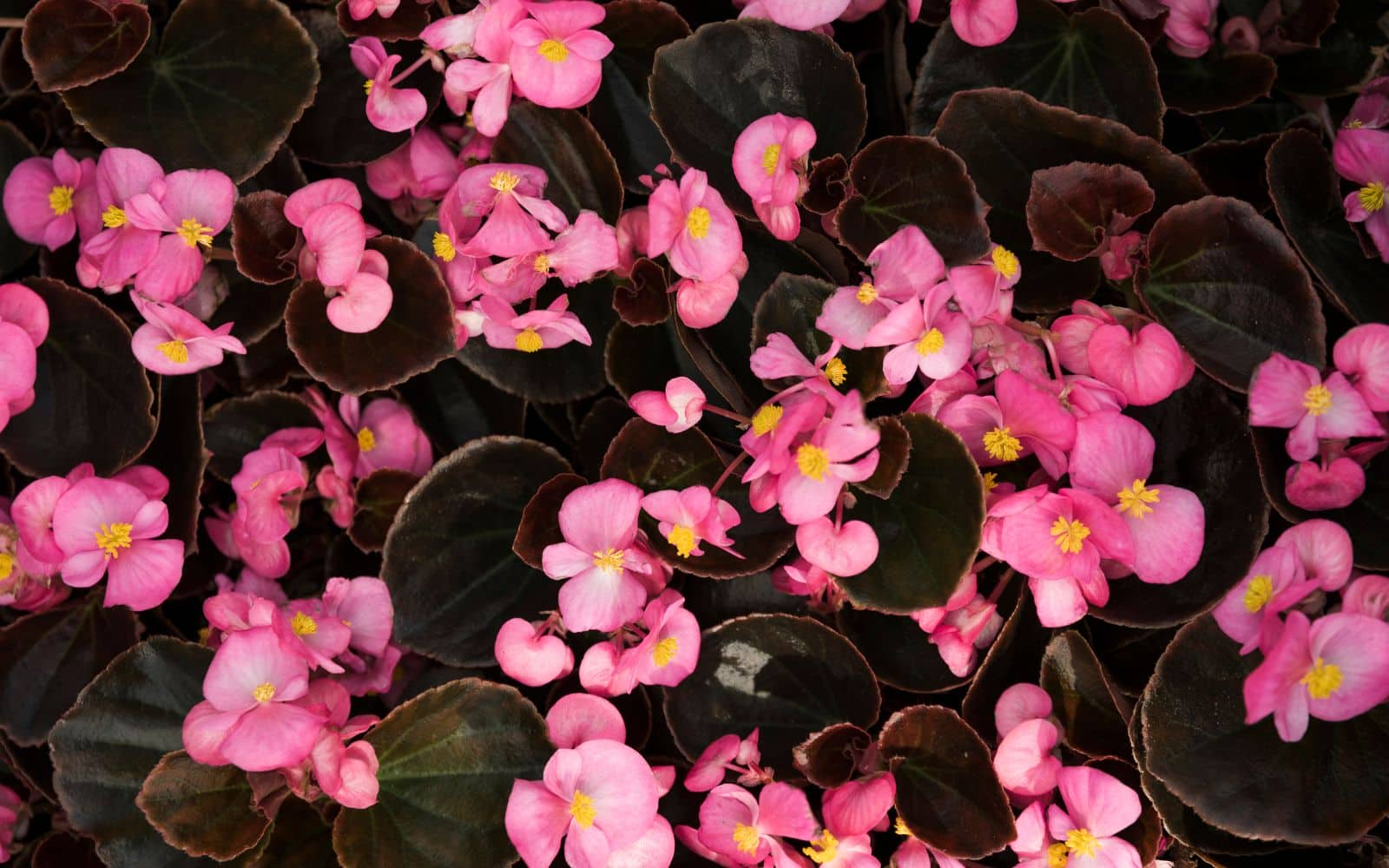
Begonia is a beautiful flowery plant that can be grown in water containers. It has lovely leaves and cute attractive flowers. Some varieties of Begonias such as Begonia Maculata Wightii bloom non-stop and can be grown in full sun or partial shade.
Begonia needs a warm temperature to grow and bloom, so don’t place it in a cold or dark place. Keeping it near the window or in the living room should be enough to provide the required sunlight.
The Hardy wax begonias form their roots in the water. These have much higher success in growing in the water container or vase. Another begonia variety such as Rex begonias and Tuberous begonias also have good growth in water.
2. Wandering Jew

Wandering Jew is a Tradescantia genus species of plant. It includes 75 different perennial species. It grows in water as long as you get the right growing condition, such as bright but indirect sunlight. And maintain the temperature between 65- and 75-degrees Fahrenheit.
These are native to Central America and have nice-looking deep purple foliage. It’s well adapted to grow in water and in a short time, forms the new root, and starts to sprout. You can plant one to two Wandering Jew stems in a narrow vase while you can plant more on a bigger jar.
To get started, use a source plant of Wandering Jew and make a cut top of the upper stem. Then put it in the water and keep it submerged till new roots start forming up. Provide it with little care while the root is forming up and fill up the water when it needs it.
3. Peace Lilly
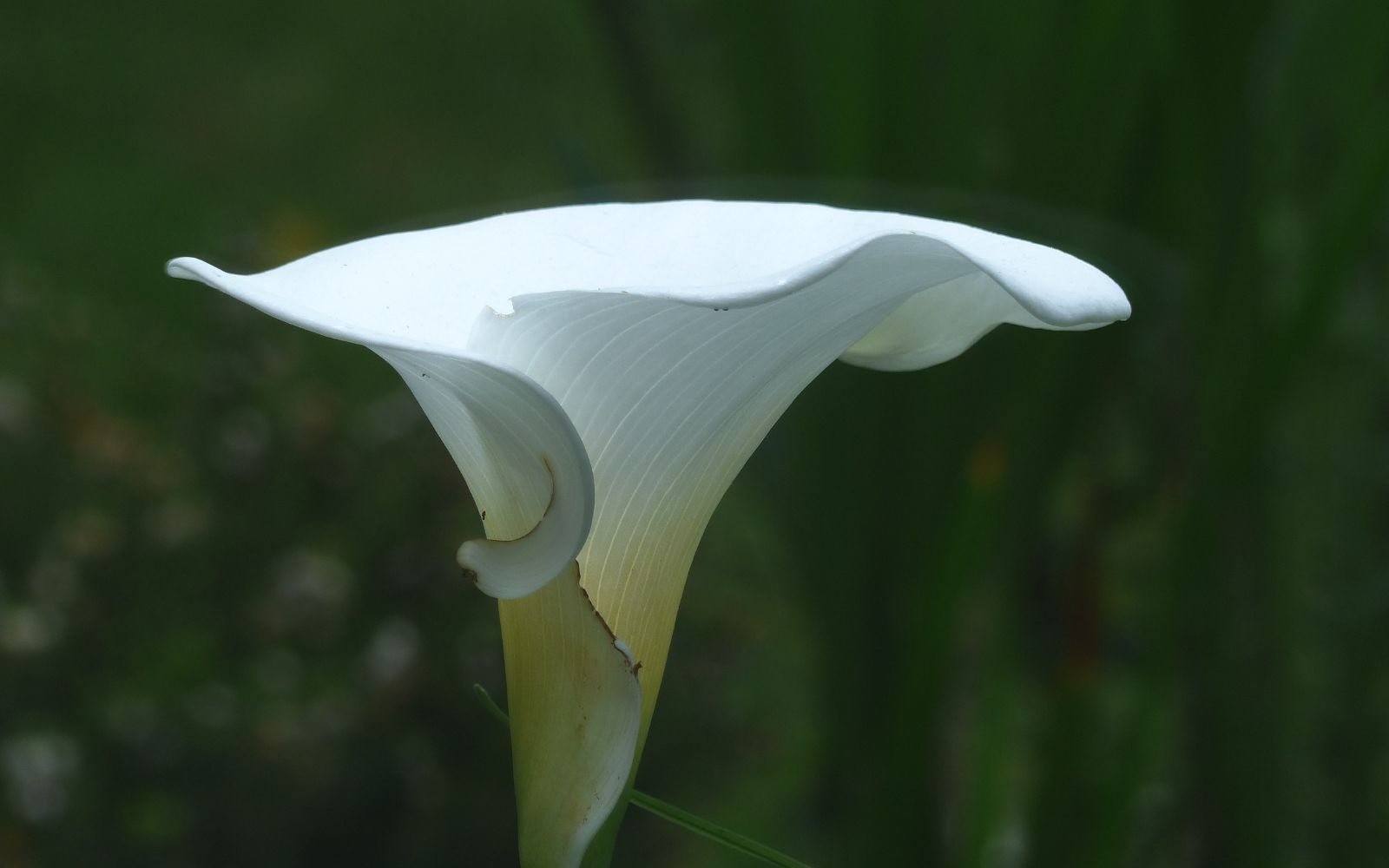
Peace Lillies are a beautiful-looking flower native to the rainforest in South America. It can grow up to 24 to 50 inches in the wild. It flowers white color blooms in the spring and has a multi-petal flower. The blooming lasts for two to three months and doesn’t need much sunlight to grow.
Peace Lillies need little care and are also beneficial for health. It’s known to clean the indoor air and oxygen, which is why many people plant it in their house as a natural air freshener.
To grow Peace Lilly in water, remove it from the pot and clean the soil in lukewarm water. When there is no more mud left on it, remove any overshoot or damaged roots. Leave four or five leaves on the plant.
Then place it with its root in the water container. Make sure the roots of Peace Lilly remain submerged in the water. Afterward, every week, change old water with fresh water. It helps the Lilly roots to absorb the nutrients from the water.
4. Philodendron

The Philodendron is easy to grow and care for houseplants. There are over 500 different species of Philodendron. The two main types of species are vines and non-climbers.
The vine Philodendron can rise around the walls and windows and thrive. The non-climbers have lush, broad green leaves. You can suspend the plant in the pot or hang it from the basket.
To grow a philodendron in water, cut about a six-inch stem from a healthy philodendron plant. You may use scissors, best pruning shears, or a sharp knife to make a cleaner cut. Fill a jar with water, and if you are using tap water, then let the chlorine in the water settles overnight.
Remove a couple of leaves from the plant to expose two or three nodes on the stem. Then place the side where you removed the leave under the water, leaving the rest of it outside the water.
Keep changing the water with fresh water every three to four days. In about two weeks, you will see the roots start growing.
Place the Philodendron where it can get sunlight but not direct light. The following two species of Philodendron have a higher success of growing in water:
- Velvet leaf vine (Philodendron Micans)
- Heart leaf Philodendron (Philodendron Cordatum)
5. Pothos

Pothos plants have pointed, heart-shaped green leaves with white, yellow, or pale green marking on them. These don’t need much care to grow and provide a green cover inside the house. A grown pothos can reach up to 6 to 10 feet tall and need partial sunlight.
Pothos usually doesn’t bloom flowers, so you grow it for its broad bright green leaves. You can plant it in the same way as Philodendron explained above. For faster growth, boost it with Miracle Grow liquid fertilizer.
Pay close attention when you are cutting the stem for planting it in the water vase. Remove two or three leaves from the end that goes in the water. Don’t remove leaves when the rooting starts to take place, and new leaves start spurting.
6. Paperwhite
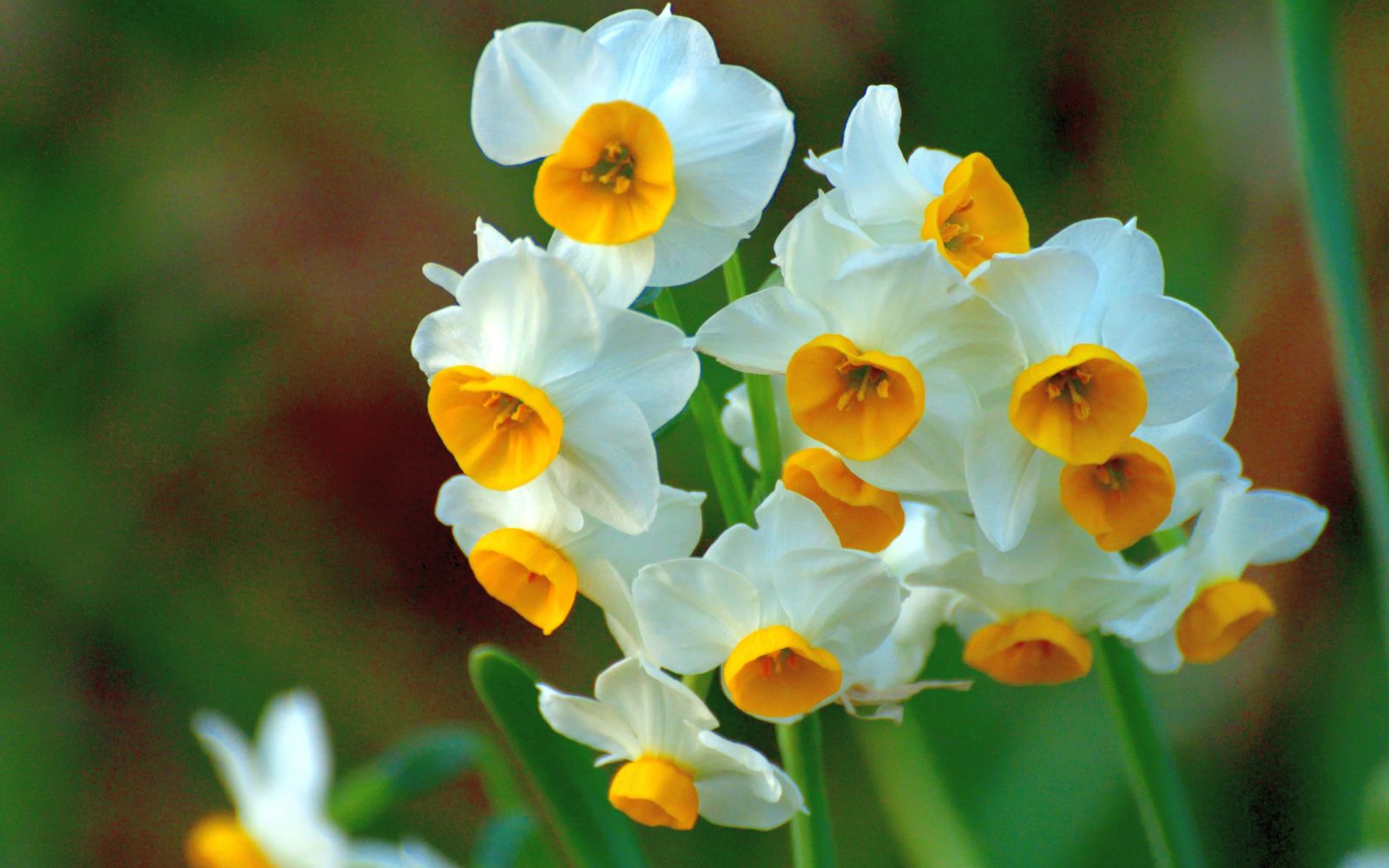
If you want little more than green leaves in your home, then consider Paperwhite. You can plant it in the water vase where it produces a cluster of fragrant blooms. You can add a couple of rocks to the pot to make it look more natural and beautiful.
To get started growing paperwhite in water, use a vase and fill it with two to four inches of freshwater. Place a couple of rocks at the bottom to support the Paperwhite bulbs. Place three or four paperwhite bulbs close to each other with their roots facing down.
Once you place the bulb, fill up the water in the vase till it reaches below the bulb base. Don’t overfill or submerge bulbs in the water; otherwise, it will rot.
The bulbs start forming roots in a couple of days and start growing. After it reaches its maturity, you will get snowy-white blossoms with a light fragrant flower. It’s one of the most popular indoor-grown plants and needs minimal effort in growing.
7. Water Lilly

Water Lilly comes in a wide variety of colors and has rounded flat leaves and bright blooming flowers. The water lilies grow only in water. These are ideal for ponds, indoor water fountains, and aquariums.
Water lilies grow fast and don’t need much care. There are two main variations of water lilies based on the growing condition. The Hardy Water Lilies and Tropical Water Lilies.
In extremely cold weather conditions, Hardy water lilies survive best as long as the water doesn’t freeze. The Tropical water lilies need a more moderate temperature, usually above 70 degrees Fahrenheit. These bloom flowers at night while others bloom in the day.
To grow water lilies indoor inside a bowl or container, pick a vessel that can hold around 15 to 25 gallons of water. Some smaller varieties of water lilies can be grown in three to five gallons of water. The bigger bowl allows the leaves to spread and tend to produce a bigger flower.
8. Chinese Evergreen
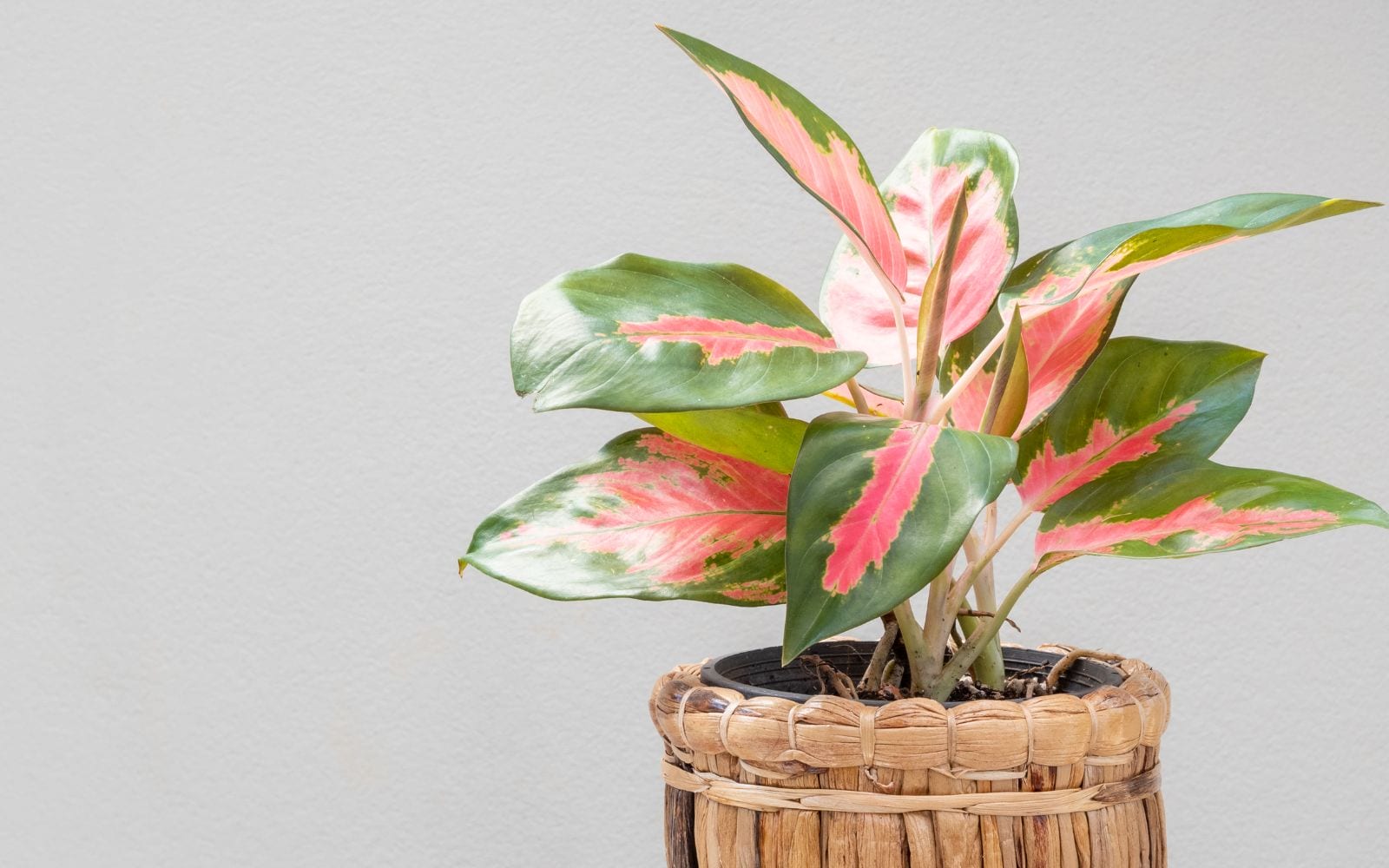
Chinese evergreen or Agalonemas has broad leaves. You may grow it indoors, and use it as a tabletop plant. The plant grows anywhere from 3 inches to 10 inches tall at a medium pace and needs partial sunlight. But you can also place it in a lower light condition, and it will grow without any issue.
To propagate Chinese evergreen, cut around the 6-inch stems from a healthy plant. Then place it in the water pot. For faster growth, fertilize it with liquid fertilizer once every two weeks during summer and blooming season.
9. Rosemary
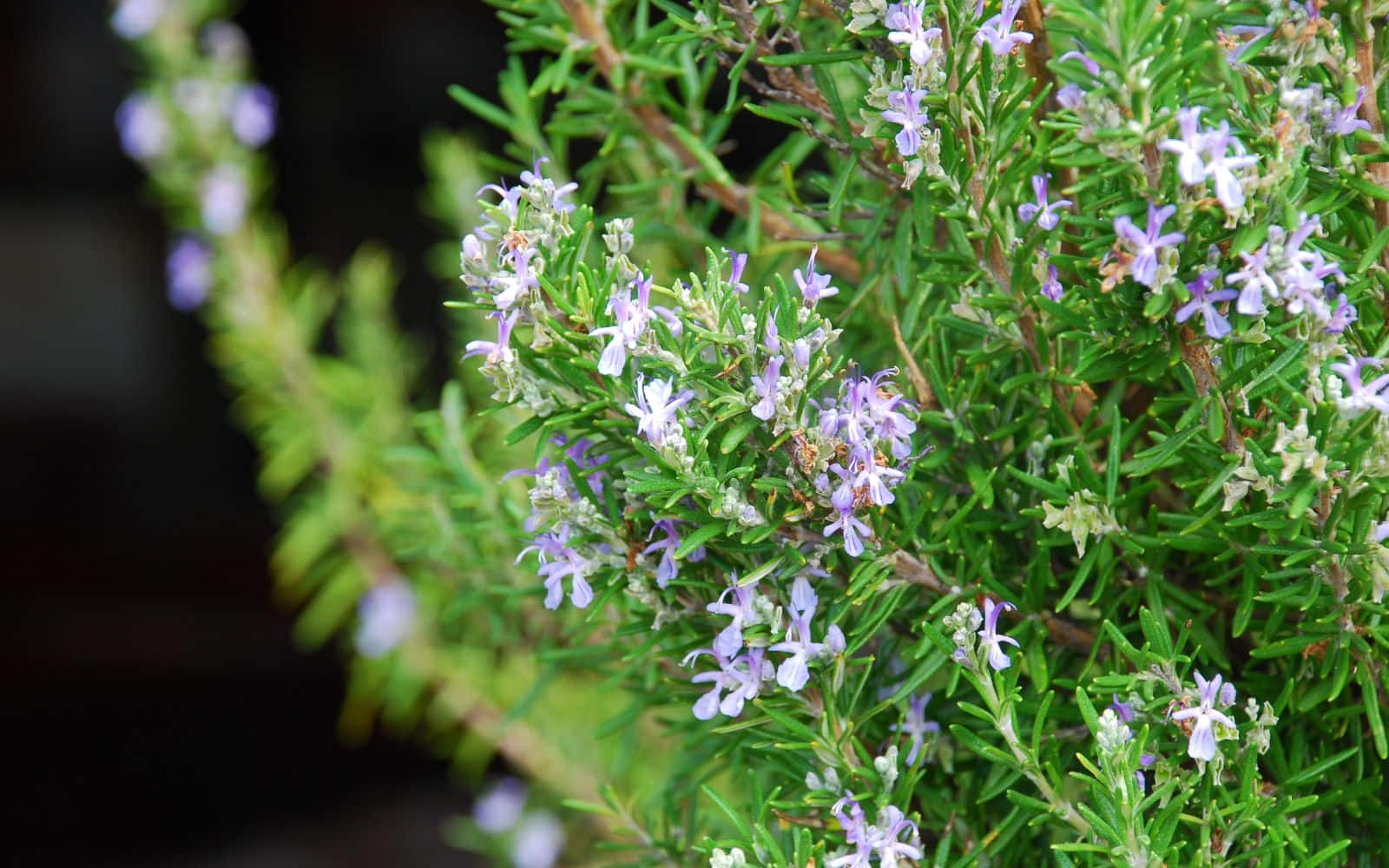
If you like growing your own herb, then you will love growing organic rosemary indoor. It’s perennial shrubs and blooms with blue flowers. You will be happy cooking with homegrown herbs and have access to it whenever you need it.
Rosemary has air-purifying properties that make it an excellent natural air freshener. You can mix it with lemon and vanilla for a different fragrance.
To grow rosemary in water, cut the fresh stem 3 inches from the existing rosemary plant. Then shed the lowest level leaves that go in the water.
Rosemary doesn’t need direct sunlight but put it where it can get some partial sunlight. Change the water every other week. It prevents the generation of algae that hampers the growth of rosemary roots. Using an opaque glass also inhibits algae growth than using clear glass.
10. Oregano
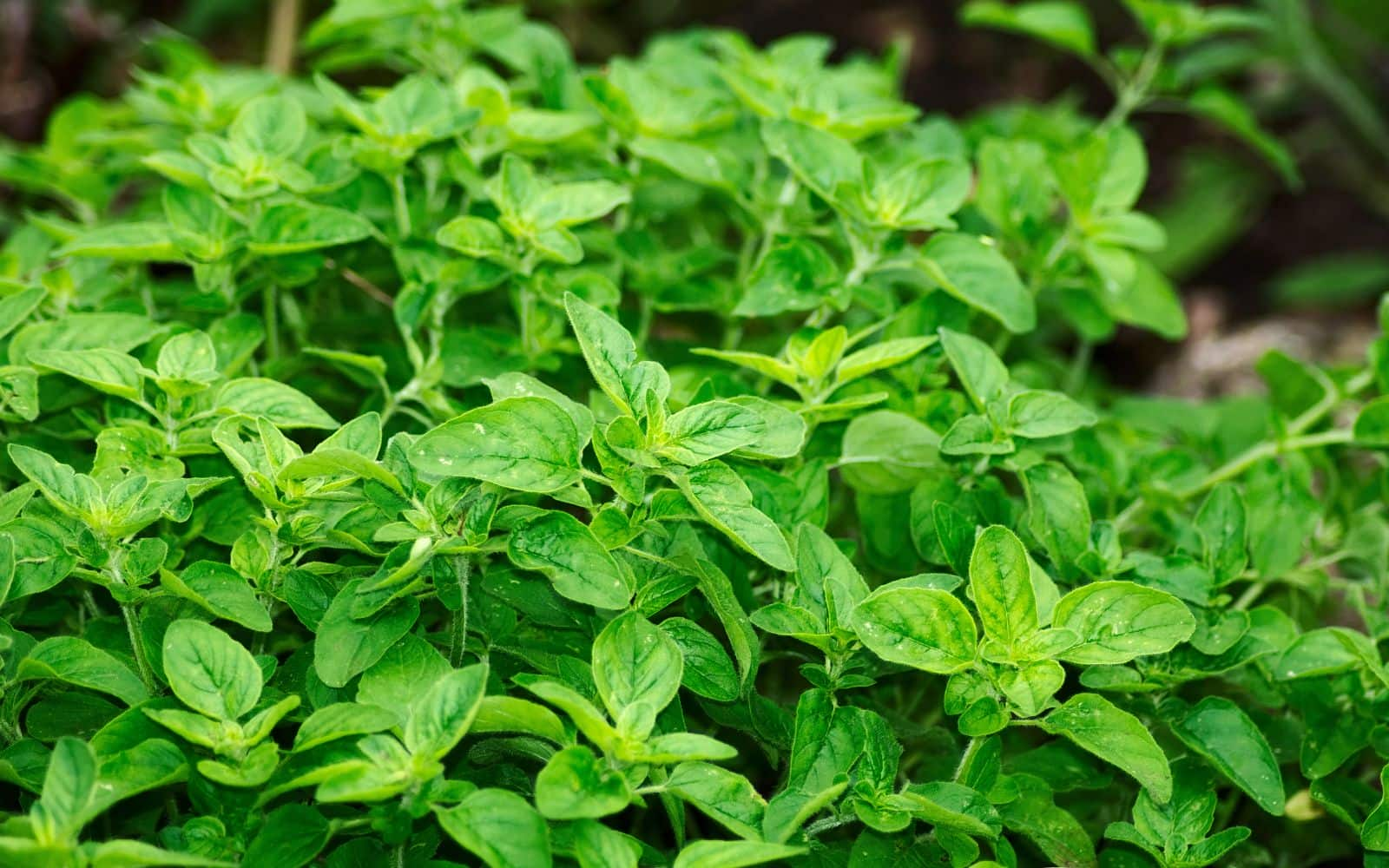
Oregano is a well-used medicinal herb from the Mint or Lamiaceae family. It can be planted in the water vase and has several health benefits.
The antiseptic properties of Oregano are well known. It’s useful in treating respiratory illness, stomach problems, and relief from mensural cramps.
The anti-inflammatory property of Oregano has made people use it in food. Growing Oregano in water is easy. First, take a cut from the healthy oregano plant around 4–6 inches long. Then remove all the leaves from the lower half of the stem.
This prevents the leave from getting rotten when you put it in the jar and contaminate the water. This can hurt the growth of the Oregano. Change water every three or four days to keep it clean and full of nutrients.
The roots should start growing in a couple of days, and you keep replacing the water. Some people mistake and use distilled water when growing the plant.
You should never do that as distilled water doesn’t have enough nutrients or minerals required for the plant to grow. Use regular tap water or spring water.
11. English Ivy
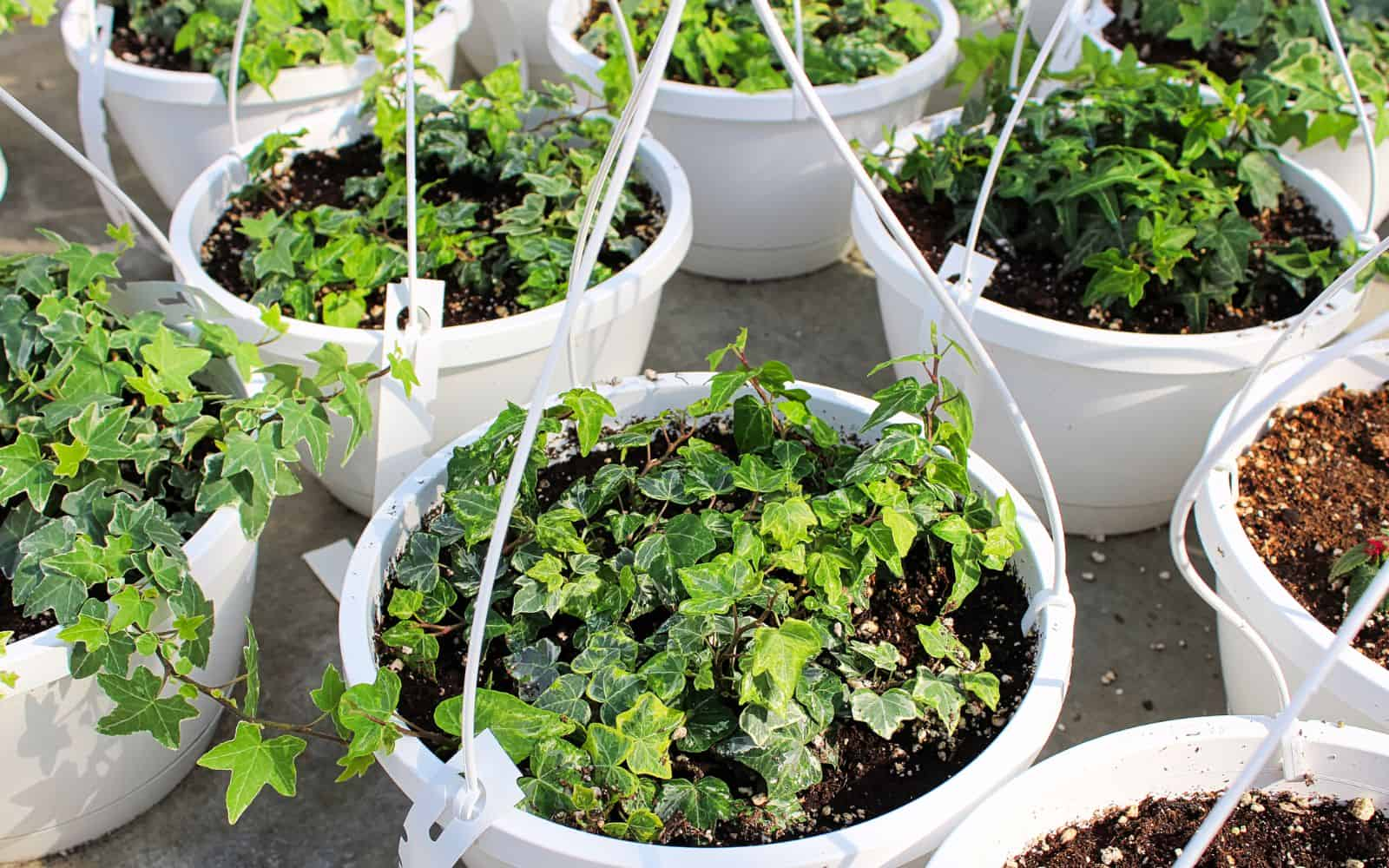
English Ivy provides excellent cover for walls and buildings. It’s an essential part of landscaping to increase the green footprint. It doesn’t produce flowers and has dense green leaves with light veins meant for climbing.
You can also plant English Ivy indoor in water. For propagation, you need to cut the stem of Ivy above the triangular fold. These angular folds are between the leaf’s stem.
Clear the bottom part of the Ivy from leaves and fill the pot with un-chlorinated water. You may also use bottled water. Insert the leafless bottom part of the stem in the water and place it in a warm partially sunny area.
Change water every other day, and in a couple of days, it starts growing new roots.
12. Spider Plant
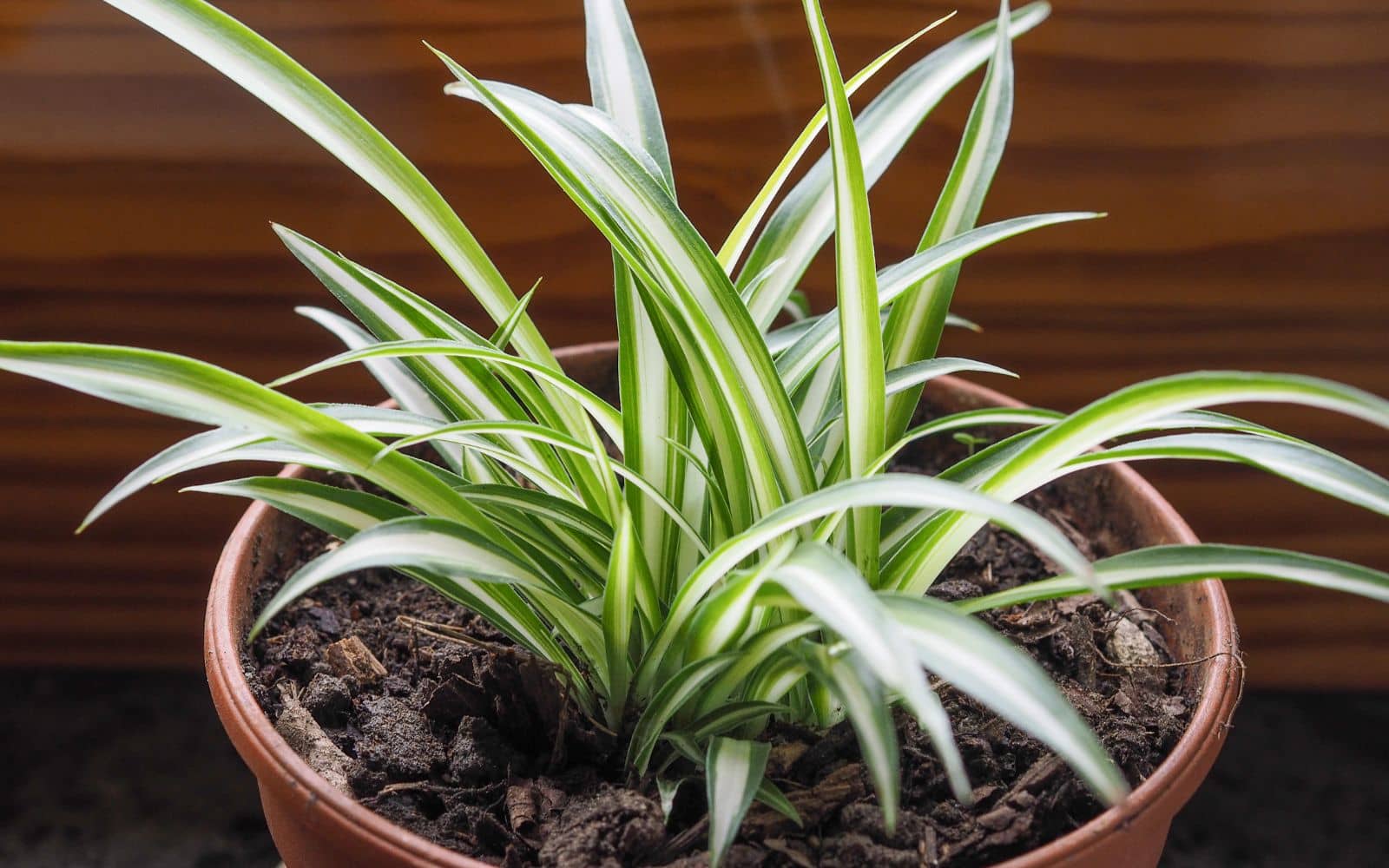
Spider plants are nice-looking plants that you may like to keep indoor. It gets the name due to its distinctive marking on the leaves and the spider-like growing roots.
It has a contrasting color to other plants. The new roots generate from the stem that you can use to plant. It grows very well in the soil but can also plant in the water.
The benefit of growing spider plants in water is due to its need for low care. This is useful if you live in a small apartment or condo, and you don’t want to mess with potting soil or other soil-borne diseases.
To grow a spider plant in water, remove the plant from the soil pot and wash it to remove dirt. Once it’s clean, inspect the root and trim down the excess root that is over 8 to 10 inches long. Also, remove any damaged or rotten roots, so it does not pollute the water.
Take a handful of clean gravel and place it in the bowl. It provides support and texture to the plant. Then place the plant root inside the vase, but don’t push it under the gravel. Pack the root with loose gravel and fill it with water.
Do you know that spider plant also helps clean the air? Keep it near the desk or in the bedroom to get a fresh supply of clean air.
13. Moses in the Cradle Plant

Moses in the Cradle Plant, also known as Tradescantia spathacea. Many people also call it cradle lily or oyster plant. These plants are native to warm climates such as Africa and Central America.
It produces long waxy, sword-shaped leaves with a green and purple color. It blooms light small white flowers in the middle and needs full sunlight to grow. You can plant it either through plant division or through stem cutting.
When planting in water, cut the stem around 4 to 6 inches in length, leaving a couple of leaves on each piece. Moses is related to the wandering Jew plant and is easy to grow without needing much care.
The leaves are quite attractive, which makes it a beautiful indoor house plant. You can put it in a water container or place it in the hanging basket. If using outdoor, then you can use it as a border plant.
14. Arrowhead
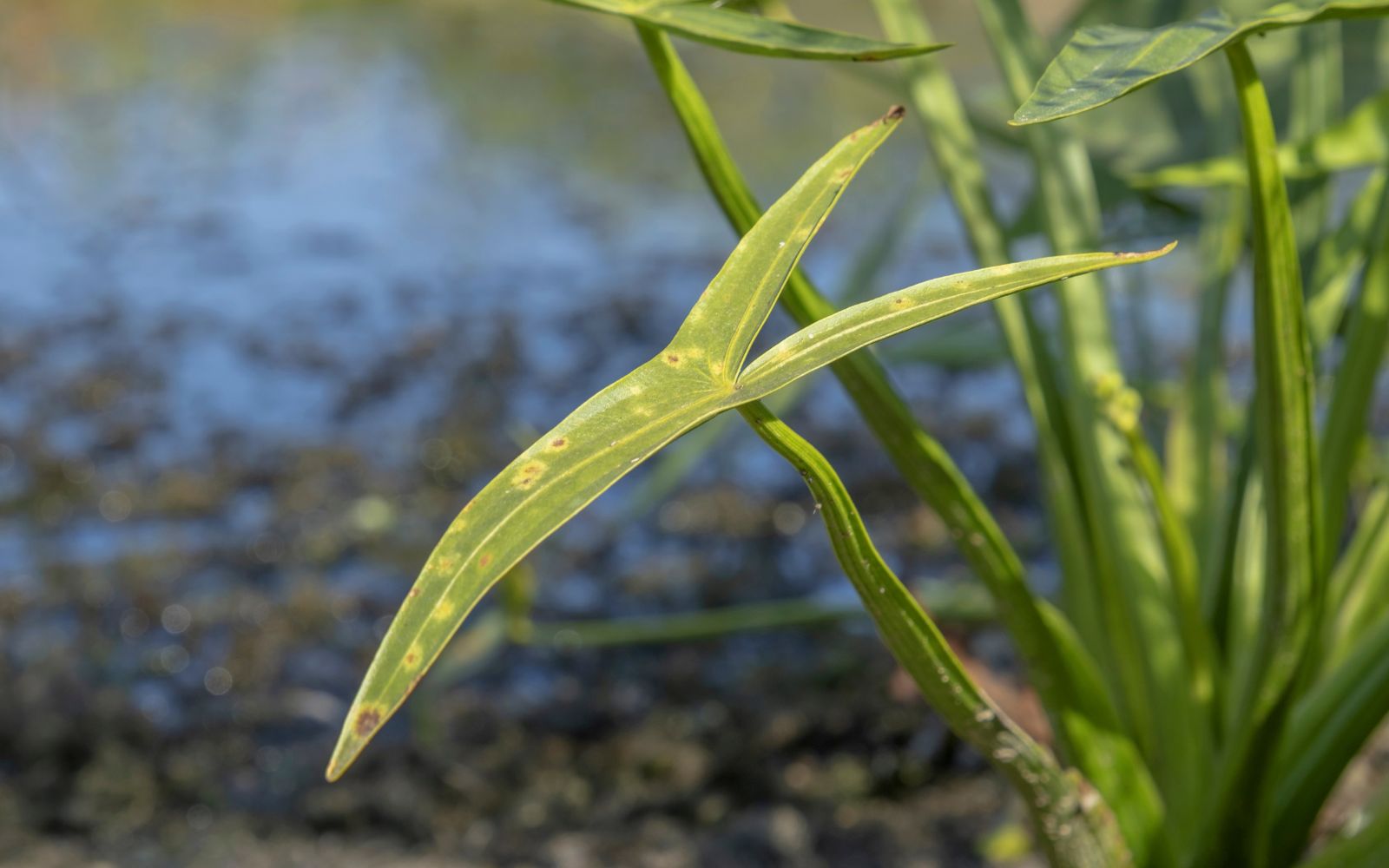
Arrowhead plants are beautiful full-leave plants found in humid conditions such as in the rainforest. These are climber plants and like to grow on the wall or other plants.
You can use arrowheads as a tabletop plant or plant it in hangers or baskets where it looks great. Its beautiful green foliage and a distinct shiny color make it attractive to keep it on the dining table.
The roots of the Arrowhead grow quite long and spread around. This makes it an invasive plant in the wild. But if you are planting it indoors in the glass vase filled with water, then that’s not the concern.
You can plant Arrowhead either through division cutting or air layering. For planting in water, division cutting is preferable as it makes it easy to root in water. After you plant it in the water container, place it where it can get bright light but no direct sunlight.
The Arrowhead plant is tropical in nature that means it grows fast when it gets enough heat, light, and humidity. Growing it in the water and placing it in the well-lit area encourages its growth.
If Arrowhead doesn’t get enough sunlight, then its growth becomes slow. The plant and leaves get shaggy and dull in color. Usually, if that happens, move the plant where it can get more sunlight. It improves the health of the plant.
15. Coleus

Coleus is one of those few plants which are easier to grow in containers than in the ground. It’s easy to propagate and doesn’t need much care. The roots grow fast, which makes them perfect for growing in water.
It needs partial shade, and planting many Coleus together makes it the right ground cover plant or great on garden borders. Many people grow it in water so they can plant it indoors. This makes it an excellent addition to be a tabletop plant that provides the natural indoor green look.
You can grow Coleus through seed or through existing plants. It takes less growth time by cutting the stem from a healthy Coleus plant. You need to cut 3 to 5-inch stems from the plant and remove most of the lower leaves, leaving only a couple of leaves at the top.
Place the stem in a water-filled container while keeping leaves outside the water. Place the vase near the window or where it can get some indirect sunlight.
In a week or two, the roots start growing in the plant to sustain it. When the plant has enough roots, it starts developing.
16. Cladophora Moss Ball
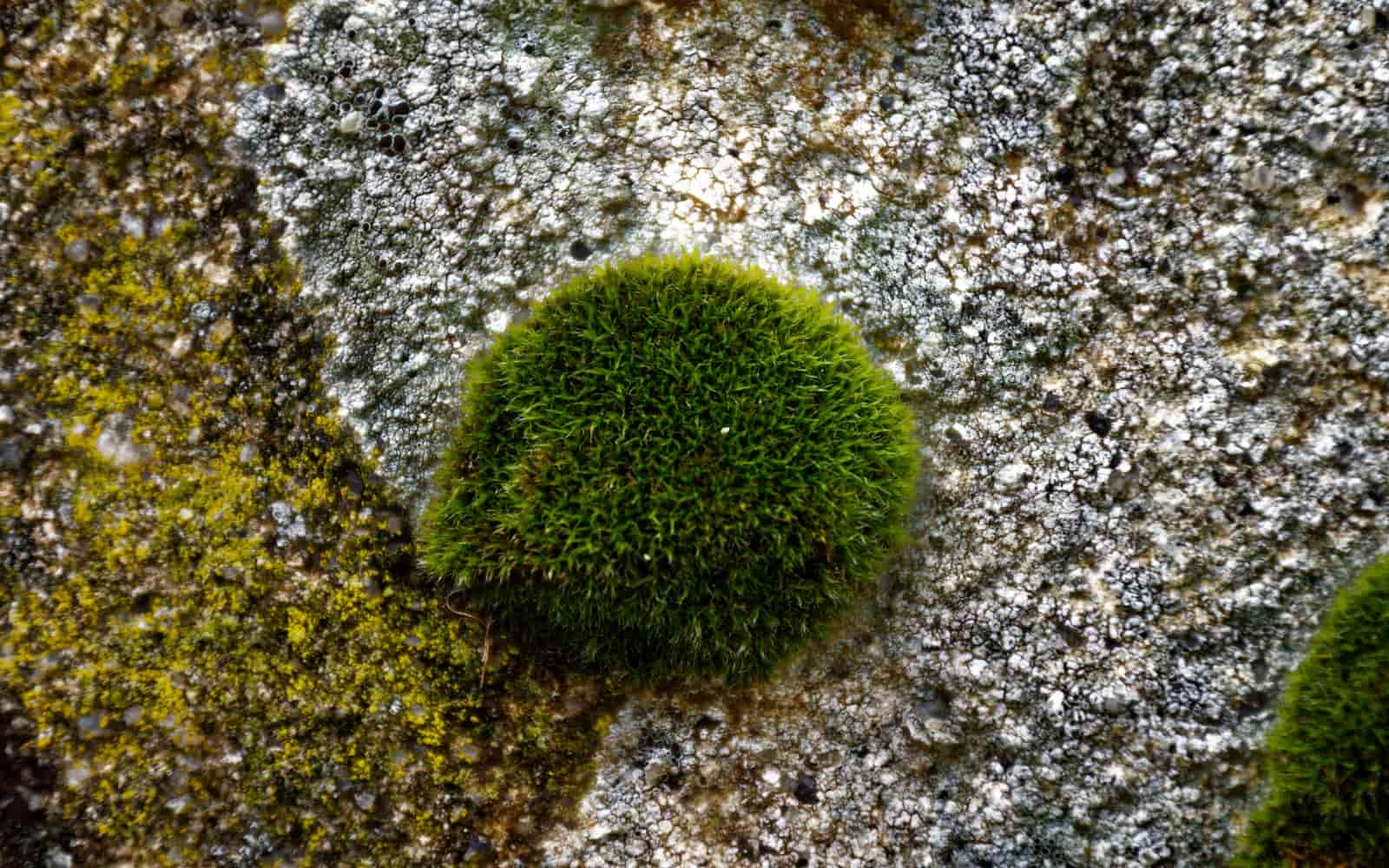
Cladophora Moss Ball is also known as the Marimo Moss ball. You can plant it in the aquariums where it gets submerged in the water and grows without getting rotten.
The Marimo Moss ball plant species are native to Japan. There it’s designated as a national treasure. The local people believe it brings good luck. The plant floats in the pond or aquarium or stays at the bottom of the tank.
You can subdivide the ball as it gets bigger. You don’t have to spend much time caring for it as it can live for several years with primary care.
If you place it in the aquarium and notice any brown spots on the plant, then turn it around so it can face the light. That usually fixes most of the common issues with the Marimo Moss balls.
Don’t place it in the straight sunlight as these are a bit sensitive plants, and direct exposure can damage them.
To further speed up the growth in the aquarium, add lights and plant fertilizer. Adding a pinch of salt in the water also spurts the grown and kills algae that may attach to the Marimo Moss Ball.
17. Lotus
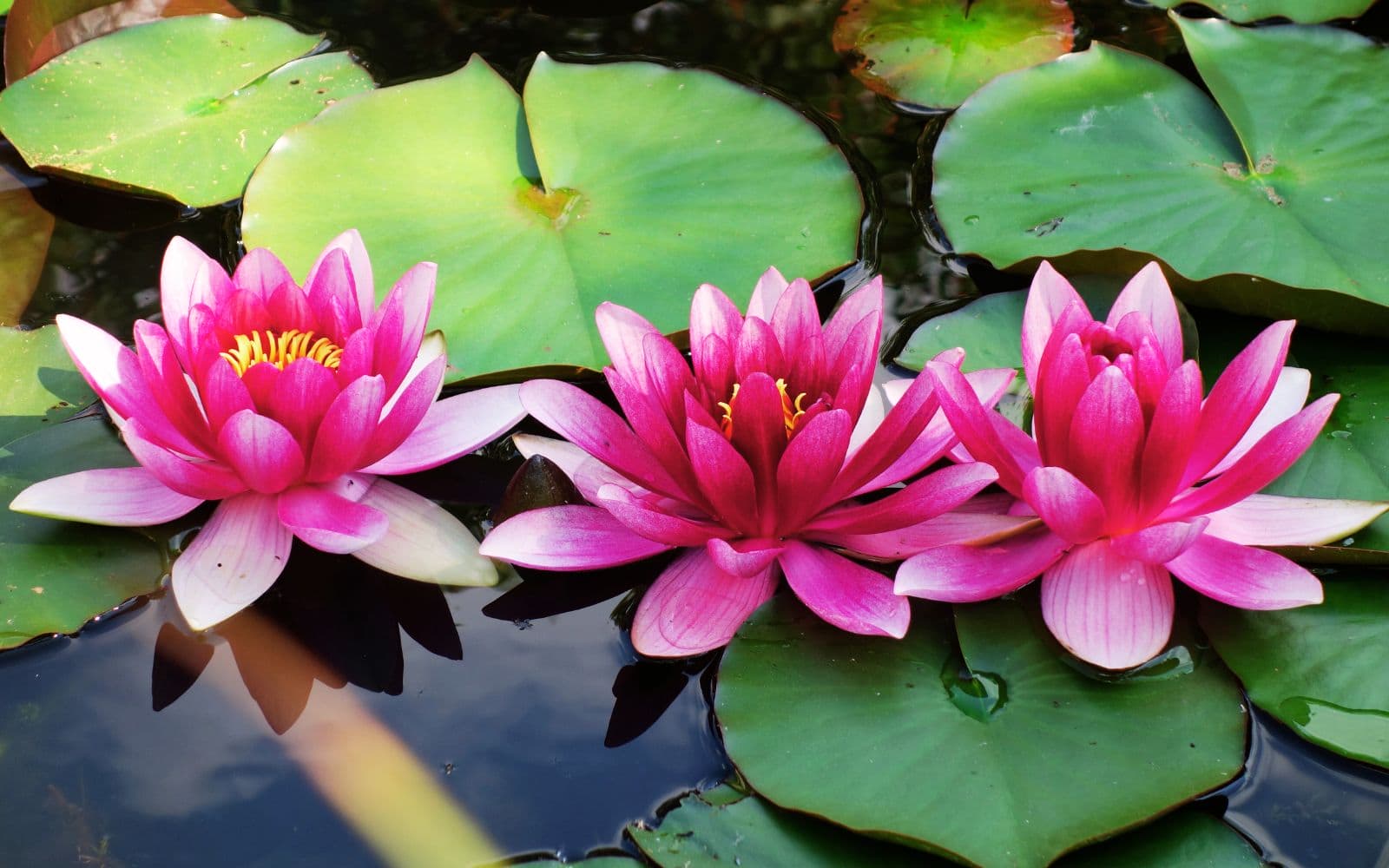
Lotus is a water plant found in ponds and lakes. The flower comes in various types and colors, such as in pink and white color. Lotus likes to grow in shallow and murky water where it can get direct sunlight.
It has broad floating leaves, and flowers usually bloom in summer. The long stem of the lotus gets filled with air that provides the buoyancy to make it float above the water. The plant is native to Australia and Asia but also grows in several other parts of the world.
The beauty of the lotus plant is that it can also be grown indoors in a large container. You have to make sure that the vase is deep enough to provide the necessary depth for the lotus roots to take hold.
You can also grow lotus from seeds, but growing it from rhizomes is usually faster and easier. To plant it, fill the container with a little garden soil to cover the rhizomes while leaving the part of the pointed tip exposed.
Then pour water around 2 inches above the soil. To prevent rhizomes from floating, you can place gravel on the top. In a few days, leaves start growing and add some more water to keep them submerged. After a couple of days, the plant matures and is ready to bloom.
18. Impatiens
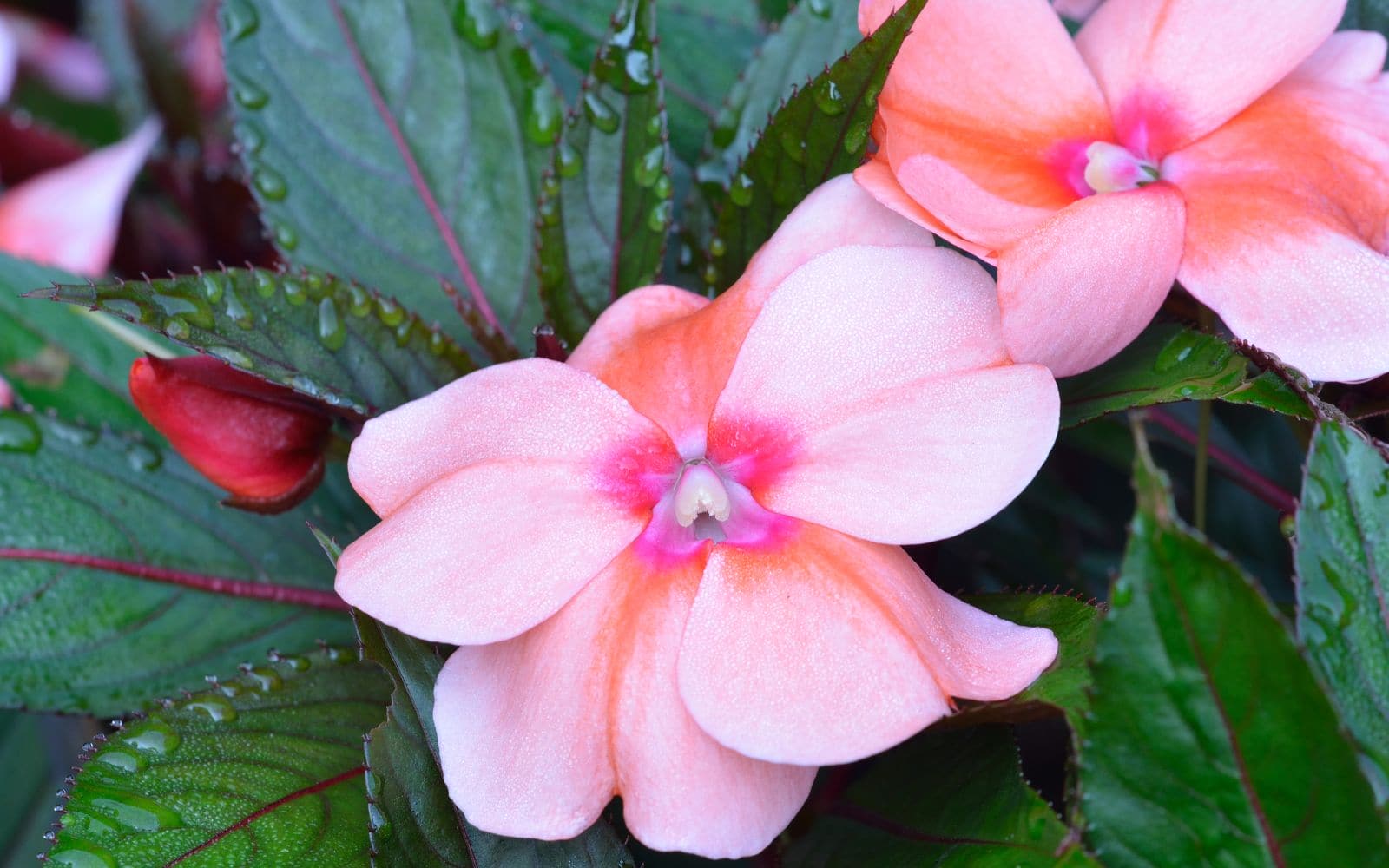
Impatiens grow beautiful multicolor flowers that make them suitable to grow indoors for decoration. This plant is also known as “Busy Lizzie” and is like shady and partial sunlight areas.
You can grow Impatiens from seeds and plants in the soil or through its stem placed in the water container. To grow Impatiens in the water, cut the stem from the existing healthy plant preserving the nod, and remove all leaves except a few at the top.
Place the stem in the water container, so the leaves are not under the water. You can then place the plant where it can get partial sunlight but not get exposed to direct sunlight.
Change the water every few days and fill it with clean water. This replenishes the nutrients and minerals needed for the plant.
The rooting happens after a couple of weeks, and once enough root has grown in the plant, it starts to grow and bloom.
19. African Violet
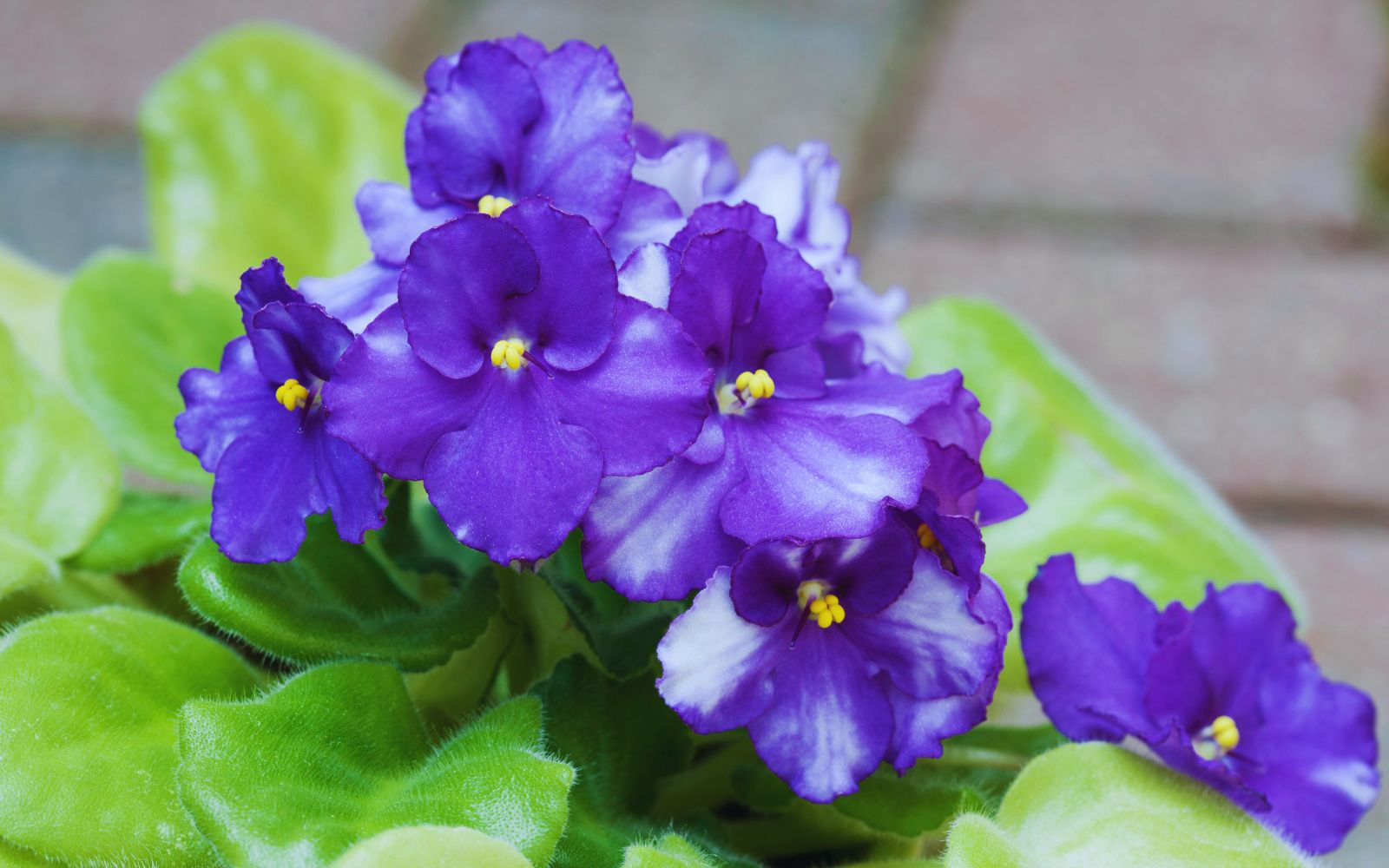
African violet is a colorful plant that can be grown indoor in the water. These are sensitive to water temperature and like lukewarm room temperature water for growth. Placing it in cold water may cause the plant to die.
People sometimes question if African violets are poisonous? The short answer is “No.” You can plant it indoors, but for some reason, cats like to chew on the plant. Usually, this results in the cat not being able to digest the plant and vomit it.
There are many varieties of African Violet with different growing sizes. The miniature plant variety can grow by fewer than 8 inches. The regular and large size African violet can grow over 16 inches tall. But if you are planting it in water, then it remains a smaller size.
Keep in mind that if you want to plant it in water, then it grows prolonged. Have some patience and wait for it to grow. Avoid getting water on the leaves and place the plant in the partial sunlight area.
African Violet grows from its leaf rather than the usual stem propagation method. Pick a healthy and mature leaf from the center of the African violet with around 1 inch of petiole below the foliage.
Let the leave remain outside in the air for around an hour before placing it in the water. It helps with the fastest growth of the roots. Change the water every few days, and after a while, you will see the roots start forming from the petiole. Once wholly grown, it begins to bloom.
Buy African Violet Variety Pack
20. Celery

You can grow celery in the water in a short time. This seems very convenient, and you may be thinking of building your own edible water garden. But the growth of celery in the water is slow.
So, if you are planning to grow celery for novelty purposes in the water, then go ahead, you will have success.
To get started, trim 3- or 4-inches stalk from the fresh celery and place it in water half-submerged. Place the container in the sunlight while changing the water with clean water every couple of days. This ensures celery gets enough nutrients and minerals from the freshwater.
21. Jade Plant
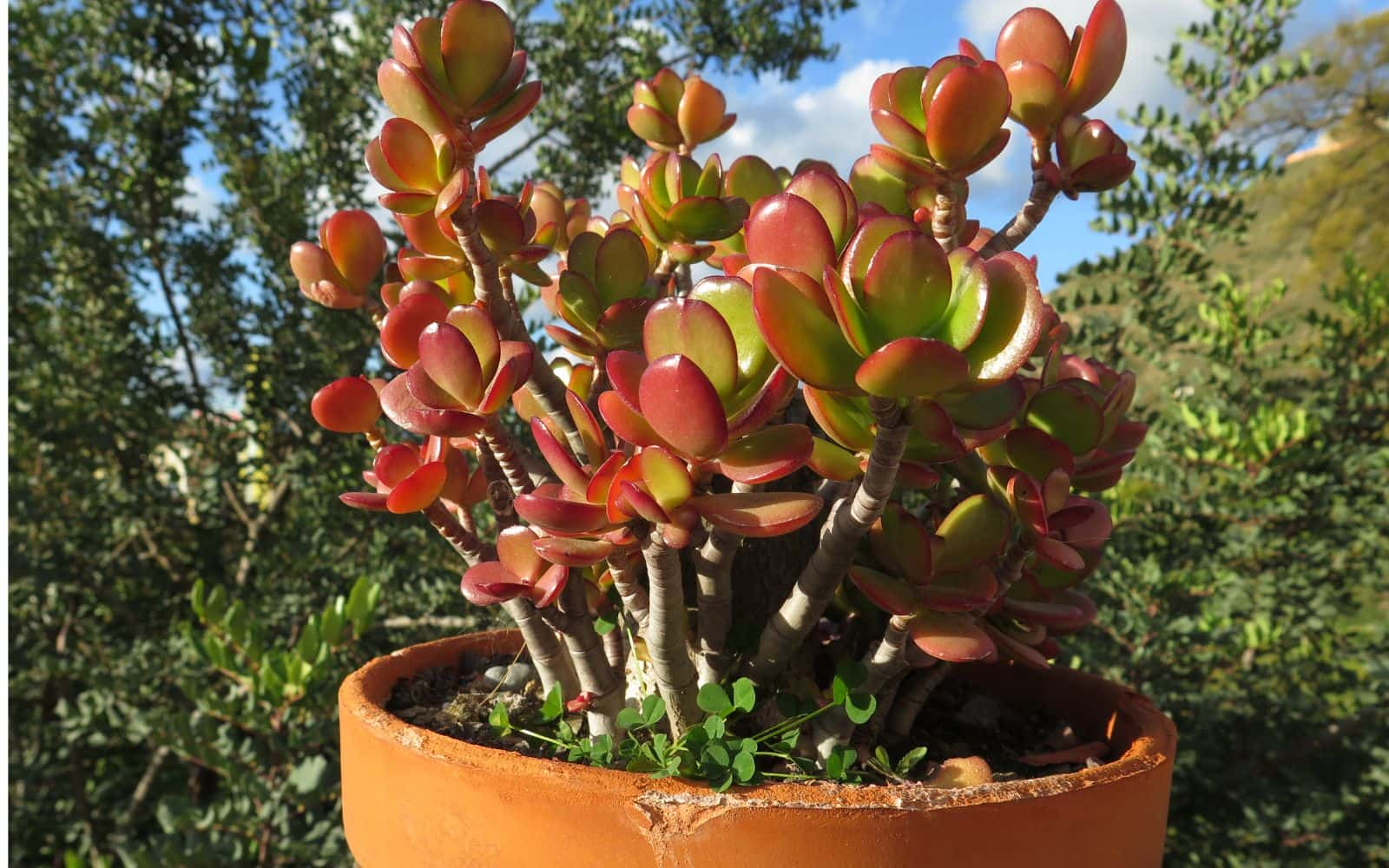
The Jade plant is also called Crassula and produces succulents or cactus-style leaves. These leaves have shiny colors and thick stalks that grow up to 5 feet tall. The jade plants don’t need much care, and they can sustain themselves in most conditions.
This is good as you can plant it with success, even if you are a novice. The one thing you need to keep in mind is that it grows fast, and sometimes the top gets too big and gets heavy. This increases the risk of becoming unstable if planted in a bottle or smaller pot.
To grow the jade plant in the water, cut the stem of a jade plant from a healthy plant. Remove 2 to 3 inches of leaves from the stem that goes under the water. Now fill the water in a container and place the jade plant in the water. You can grow other succulents in the same way.
Jade will start developing roots in a couple of days. Keep changing water every few days to provide essential nutrients to the plant.
22. Lemongrass

Lemongrass is another popular herb that you can grow in water. You can grow lemongrass for its medicinal or use it in herbal tea. It prevents the growth of bacteria and yeast while providing relief from pain and swelling.
You can buy lemongrass stems from grocery stores. Growing lemongrass in water is very straightforward and easy. Cut the bottoms 5 to 6 inches stem of the lemongrass and place it in the water bowl. Keep half of the length above the water, and don’t submerge it.
Put it at a place where it can get enough sunlight and change the water every few days. For faster growth, you can add some liquid fertilizer, which boosts plant growth. The lemongrass starts sprouting roots in a couple of days.
23. Lucky Bamboo
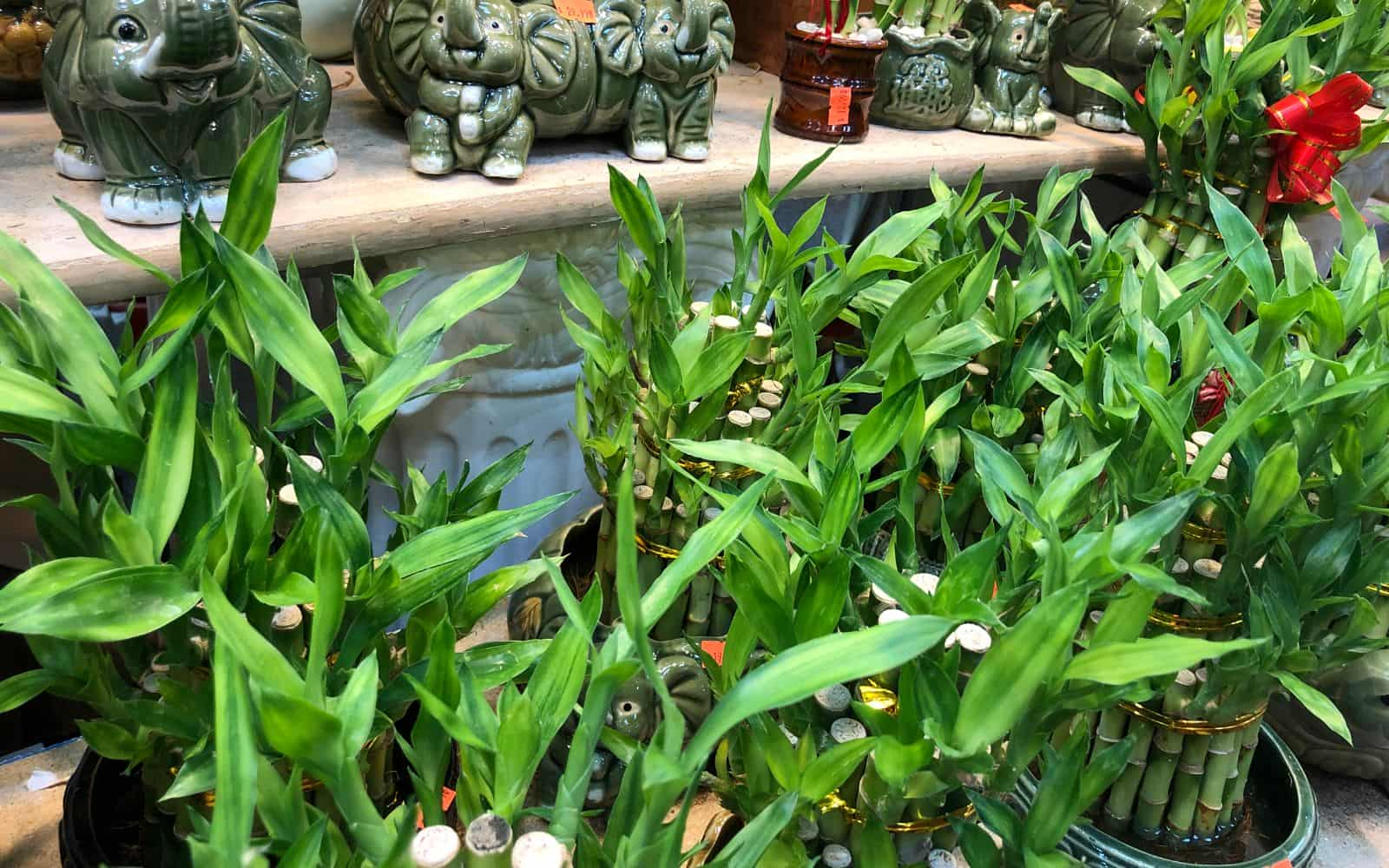
Lucky Bamboo is a part of the Dracaena Genus family that is not bamboo. It’s grown in Asia and used by the Chinese in Feng Shui for over several centuries. People believed that keeping it in the home brings good luck and thus called it Lucky Bamboo.
The lucky bamboo is a very flexible and adaptive plant. It can be molded into various types of shapes. It doesn’t need much care and can be grown both in soil and water.
It won’t need much sunlight and put it indoors where it gets partial sunlight. In fact, placing it in direct sunlight can burn its leave, and the plant growth slows down.
When growing lucky bamboo in the water, always use non-chlorinated water. Tap water often contains chlorinated water. You can leave the tap water overnight to settle down the chlorine in it. You can also use the mineral water to fill up the tank and replace it every two or three weeks.
You can grow more lucky bamboo from the existing cane by cutting it around 3 or 4 inches and placing it in clean water. If it becomes too big, then you can also reduce the foliage to make it shorter.
What Are The Plants That Grow In Water Called?
Plants that grow in water are usually adapted to live in condition that can be either saltwater or freshwater. These plants growing in water are called Hydrophytes or Macrophytes. These plants may submerge in the water, or they can float on top of the water.
In everyday terminology, you can also call these waters growing plants to be aquatic plants. These are further divided into 4 different types:
- Deepwater plant
- Floating plant
- Marginal plant
- Oxygenated plant
The technique to grow these plants in the water is called hydroponics. It allows you to grow the plant without soil.
Which Plants You Can Grow In Water And Eat As Food?
There are several flowers that are grown in water and eaten as food. Here are water-grown plants that you can eat:
- Lotus: Grows in water and eaten in Southeast Asia. You can eat its flowers, seeds, leaves, and even roots
- Water Caltrop: It grows in the water and also known as a water chestnut
- Watercress: Grown in Europe and Asia and have leaves that can be eaten
- Water Spinach: Found in the tropical part of the world and have tender shoots and roots. You can eat these either raw or cooked
- Water Pepper: Found in the shallow water and used as herbs or spice
- Wasabi: It’s like a water cabbage and used as a spice due to its robust flavor
How The Plants That Grow In The Water Gets Pollinated
The water plants growing in the water get pollinated like as they would be on the land. These water plants have male and female parts of the plant which attract bees, insects, and birds.
The male flower part releases pollen grains in the air that then fall in the water. It gets transported to other flowers through water waves. The female flower parts then catch this pollen and become fertile and produce seeds.
Some water plants have long shallow pools that grow and get attached to the female flowers. Most invasive seaweeds get pollinated through water and grow very fast. If you are using a hydroponic system then you can pollinate it manually.
Why Is Salinity Bad For Plants That Grow In Water?
Higher salinity in the water makes it difficult for the plant to absorb water. This is due to a process called osmosis that enables water to reach different parts of the plant.
The water inside the plant moves from a low-salt area to a higher concentration of salt area. Abundant saline water makes plant cells have higher salt concentrations. This impacts the osmosis process and slows down the water flow inside the plant.
Plants need water as it helps them to move nutrients to other parts of the plant. The water in the plant act in the same way as blood works in human.
The higher outside salt concentration creates the reverse osmosis process. In this water moves from inside (lower salt concentration) to outside of the plant (higher salt concentration). This results in loss of moisture and nutrients and harms the growth and health of the plant.
Where To Buy Plants That Grow In Water?
You can buy water-growing plants from the local garden shop or from online retailers. Several online retailers also provide seed and plant bulbs.
My favorite is Amazon, as they provide the most different variety of plants. Amazon usually has better shipping time and a customer satisfaction guarantee.
The other places where you can buy water plants are eBay or the garden center.
Which Plants Grow Faster: Soil or Water?
This depends on the type of plant and its natural growth environment. There is no scientific study done yet to compare the plant growth rate in soil and water. But common-sense dictates that most land-based plants in water grow slower than in soil.
This is the result of a higher amount of nutrients available in the soil. And the best ability of the plant to grow its roots. This helps to keep the plant upright for the sunlight that increases its growth rate.
Some of the plants mentioned above grow both in soil and water. It generally takes longer for these plants to grow in water than when planted in soil.
How Do Green Plants That Grow In Water Make Their Food?
Plants have a process called photosynthesis that allows them to use sunlight to convert nutrients and minerals into food. There is not much difference between the soil plant vs. water plants as both need sunlight and carbon dioxide to grow.
The main difference comes from the delivery of nutrients. In water plants, it comes from minerals dissolved in the water, and the soil-based plant gets their nutrient from the soil.
So there you have it all the plants that grow in water which you can get started with little to no effort.
Also, check out how to grow a lemon trees from seed?
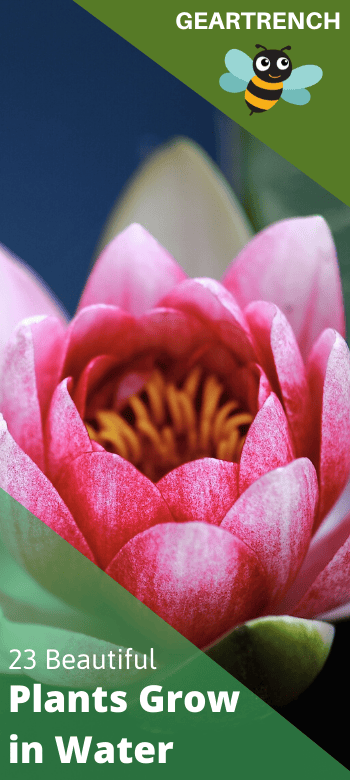

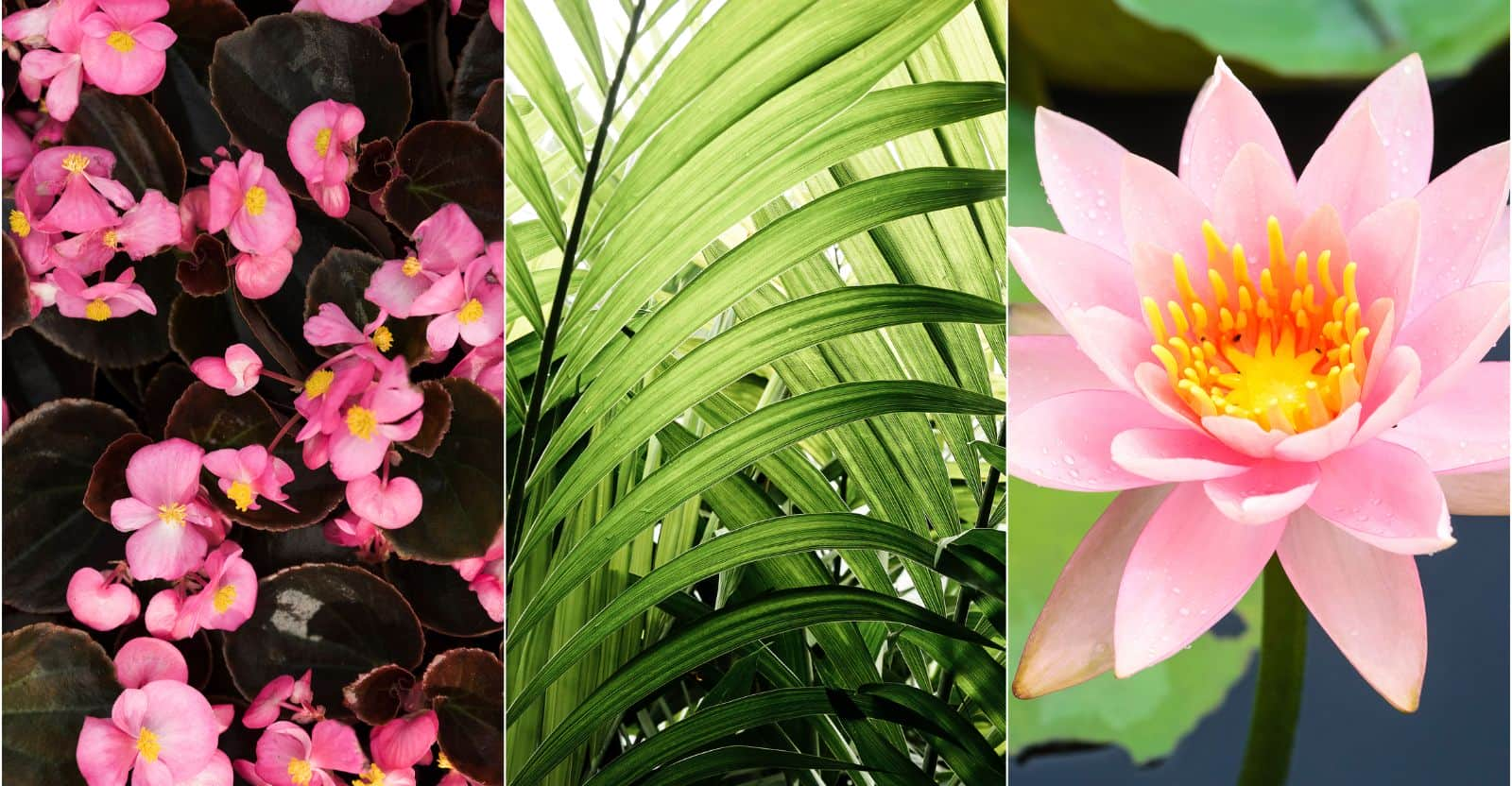
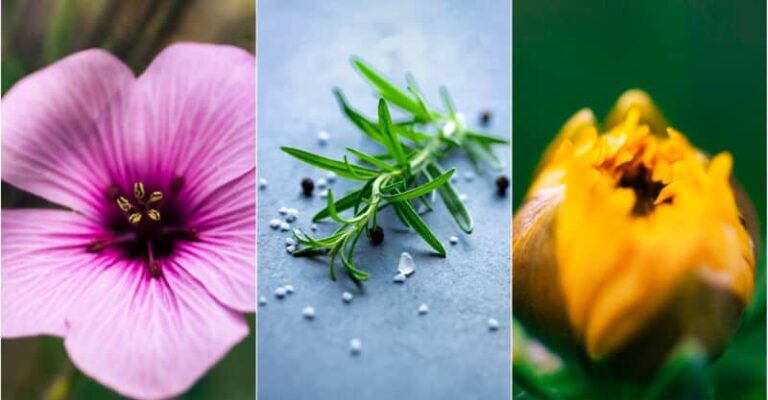

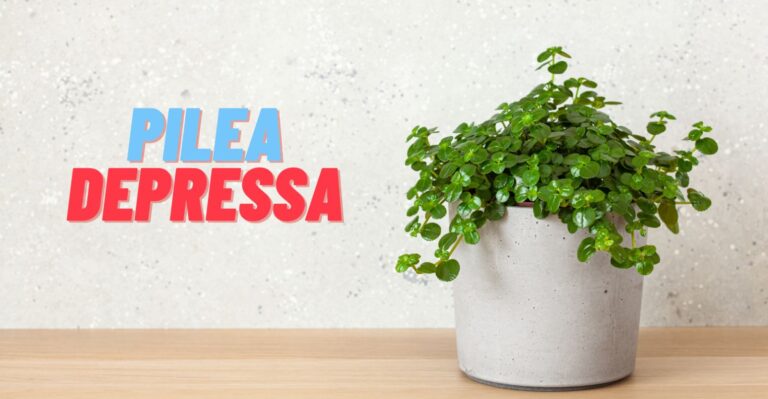
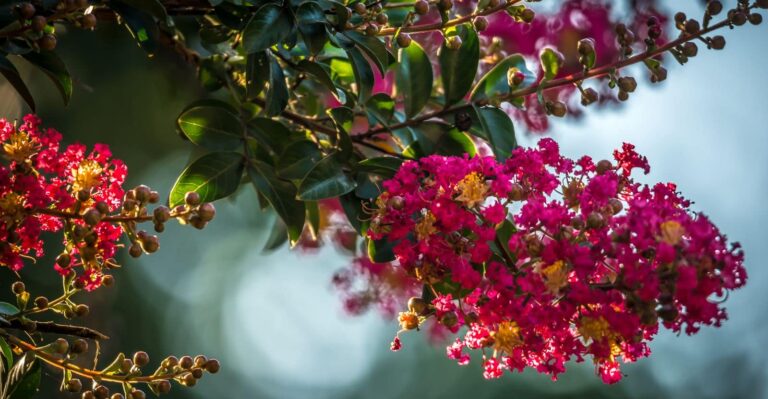

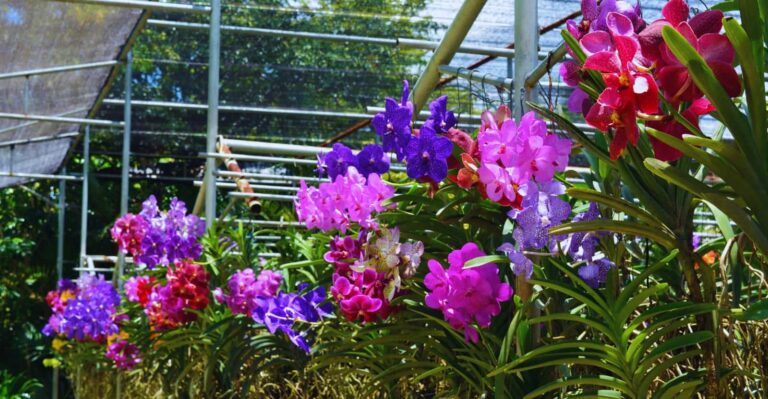
I have a hard time describing my thoughts on content, but I really felt I should here. Your article is really great. I like the way you wrote this information.